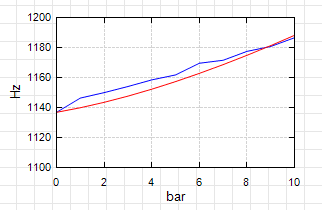nicomedian
Aerospace
Hello,
It might sound weird but I would like to make a free-free preloaded modal analysis. Imagine that a rocket flies with its pressurized propellant tanks. I want to include the stiffening effect of the pressure. I tried two things:
1. Restrain the structure during static (preload) load step. Refer to first load step and have no SPC definition in modal analysis.
2. Do an unrestrained analysis (inertia relief). Refer to first load step and have no SPC definition in modal analysis.
In both cases, I end up with only 3 rigid modes - very close to zero. The remaining 3 modes are actually rigid modes when I visualize them, but their frequency value are way high. Can anyone think of how to approach such problem?
I am actually doing trial analysis with a representative tank structure; standard steel properties with 50 mm diameter, 0.4 mm wall thickness, 6 mm cap thicknesses, 250 mm length, internal pressure of 0.7 MPa.
Any help would be highly appreciated.
It might sound weird but I would like to make a free-free preloaded modal analysis. Imagine that a rocket flies with its pressurized propellant tanks. I want to include the stiffening effect of the pressure. I tried two things:
1. Restrain the structure during static (preload) load step. Refer to first load step and have no SPC definition in modal analysis.
2. Do an unrestrained analysis (inertia relief). Refer to first load step and have no SPC definition in modal analysis.
In both cases, I end up with only 3 rigid modes - very close to zero. The remaining 3 modes are actually rigid modes when I visualize them, but their frequency value are way high. Can anyone think of how to approach such problem?
I am actually doing trial analysis with a representative tank structure; standard steel properties with 50 mm diameter, 0.4 mm wall thickness, 6 mm cap thicknesses, 250 mm length, internal pressure of 0.7 MPa.
Any help would be highly appreciated.


